We're an affiliate
We hope you love the products we recommend! Just so you know, we may collect a share of sales or other compensation from the links on this page at no additional cost to you. Thank you if you use our links, we really appreciate it!
The Dachshund (pronounced dahks – hund) are easily recognized by their elongated bodies and short legs. These little hounds have become one of the most beloved family pets since the 1950s.
Although they may not look like it, Dachshunds were initially bred for their ferocious hunting abilities which saw them crawl into badger and rabbit holes to fetch them out.
These lovely dogs are also called the wiener dog in America, doxie, or sausage dog in the UK, and they are massively loved for their alertness and shrewd mentality.
Follow along with our comprehensive breed guide to discover everything you need to know about the Dachshund dog breed.
We’ll cover important aspects ranging from Dachshund history, types, and their delightful personality which continue to make them a favorite choice among canine enthusiasts.
What Is a Dachshund? A Brief History of The Dachshunds
The name ‘Dachshund’ is of German origin and it translates to ‘Badger dogs’ in the English language.
Although their exact origin is still in question, many historians agree that Dachshunds were bred in Germany from the early 15th century as hunting dogs.
The main goal of the ancient breeders was to create a smaller hound dog with the ability to hunt burrowing animals like badgers and foxes.
These low-riding dogs were selectively bred for their elongated bodies, which allowed them to enter badger dens and rabbit holes.
They were also preferred for digging up small animal dens because of their short legs, which made them able to navigate tight tunnels.
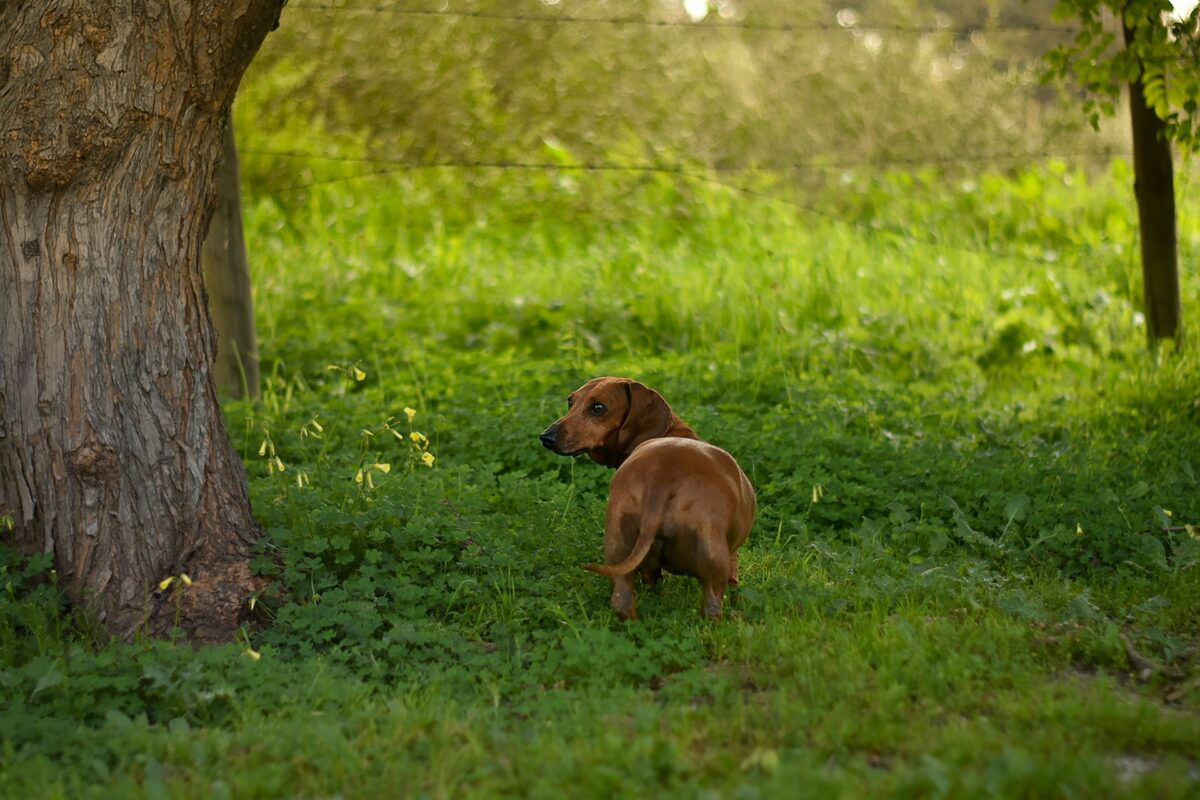
The imposing stature of Dachshunds, sheer determination, and independence were ideal for digging and entering badger holes to fight their prey to death.
The German breeders also strengthened the genes for flap-down ears which helped to keep dirt and debris away from the inner ear canal when digging out prey.
Over time, these little hound dogs developed a keen sense of smell, making them excellent at tracking small animals using scent trails.
It wasn’t until 1841 that the first Dachshund dogs were imported to England. Detailed records from dog shows indicate that these pups appeared in the 1860 show event.
Dachshunds were registered into the English breed registry in 1874 and were annexed as ‘German Badger Dogs’ in brackets.
Sausage dogs gained favor before the British noblemen and they were increasingly found in many royal homes which helped spread their popularity across the United Kingdom.
An excerpt from Queen Victoria’s diary dated April 23, 1833, makes mention of her lovely Dachshund whom she named ‘Dash’.
The adoption of Dachshunds into households transitioned them from ferocious working dogs into becoming docile family companions.
During World War I, Dachshund’s popularity in the United States saw a huge decline because of their German origin.
They however reclaimed their admiration, rising to become one of the top ten most popular dog breeds in the US according to the American Kennel Club (AKC) registry.
5 Fascinating Facts About Dachshunds
1. Dachshunds love to dig
It comes as no surprise that modern-day Dachshund loves to burrow in cozy beds and soft grounds in backyards.
This is due to their instinctual digging skills which were developed by early Germans for hunting badgers and other small animals.
2. Doxies were temporarily rebranded during the 1st World War
The AKC tried to rebrand the Dachshund to ‘badger dogs’ during the peak of World War I because the breed’s popularity was declining due to their German heritage. But that didn’t work!
3. Dachshunds have three varied coat types
Wiener dogs can have smooth, wire-haired, or longhaired coat types. The smooth-coated Dachshunds are the most popular.
All ancient Dachshunds had smooth coats and the other two varieties came about as a result of cross-breeding smooth-coated Doxies with other dog breeds.
4. The first Olympic mascot was a Dachshund.
The 1972 Summer Olympics, held in Munich, Germany, introduced the world to a charming Dachshund named ‘Waldi’ – the first official Olympic mascot.
To make it more interesting, the year’s marathon route was plotted to resemble the shape of a Dachshund dog.
5. Dachshunds are of two sizes
The AKC recognizes two size variations of the Dachshund dog breed; the standard version and the Miniature.
Standard Dachshunds have an average weight of about 35 pounds and were used to track badgers and wild boars while miniature Dachshunds weighed about 11 pounds and were bred much later.
Related Read: 10 Interesting Facts About Wiener Puppies
Dachshund Puppies
When planning to bring a Dachshund puppy into your home, there are two sources you may want to consider: adopting or buying.
Both options have their advantages and disadvantages, so you should do proper research while considering what you’re looking for in a household dog.
Whichever the source, owning a Dachshund puppy is a rewarding experience that can add an irresistible charm to your everyday life.
These little hound pups are full of enthusiasm, playfulness, and an insatiable curiosity that will keep you on your toes.
But with all that energy comes great responsibility on your part. Dachshund puppies require diligent obedience lessons and exposure to different settings that enable them grow into well-behaved adults.
The ever-alert and bold expression of Dachshund puppies makes them ideal candidates for early training and socialization.
Make sure your preferred Dachshund puppy is completely weaned from its mother before separating them.
Keep in mind that the early months are a crucial time for building the foundation of a strong and loving bond with your new furry friend.
So, be prepared to invest your time, patience, and lots of love in your Dachshund puppy’s upbringing, and you’ll be rewarded with a lifelong companion who’s both loyal and adorable.
Dachshund Types
A. Based on Size
1. The standard Dachshund
When Picturing a Dachshund in your mind, you’re often thinking about the Standard-size version which is the closest cousin to the original German Badger Dogs.
These larger Doxies have a weight range of between 11 to 35 pounds and they have a peak shoulder height that averages 9 inches.
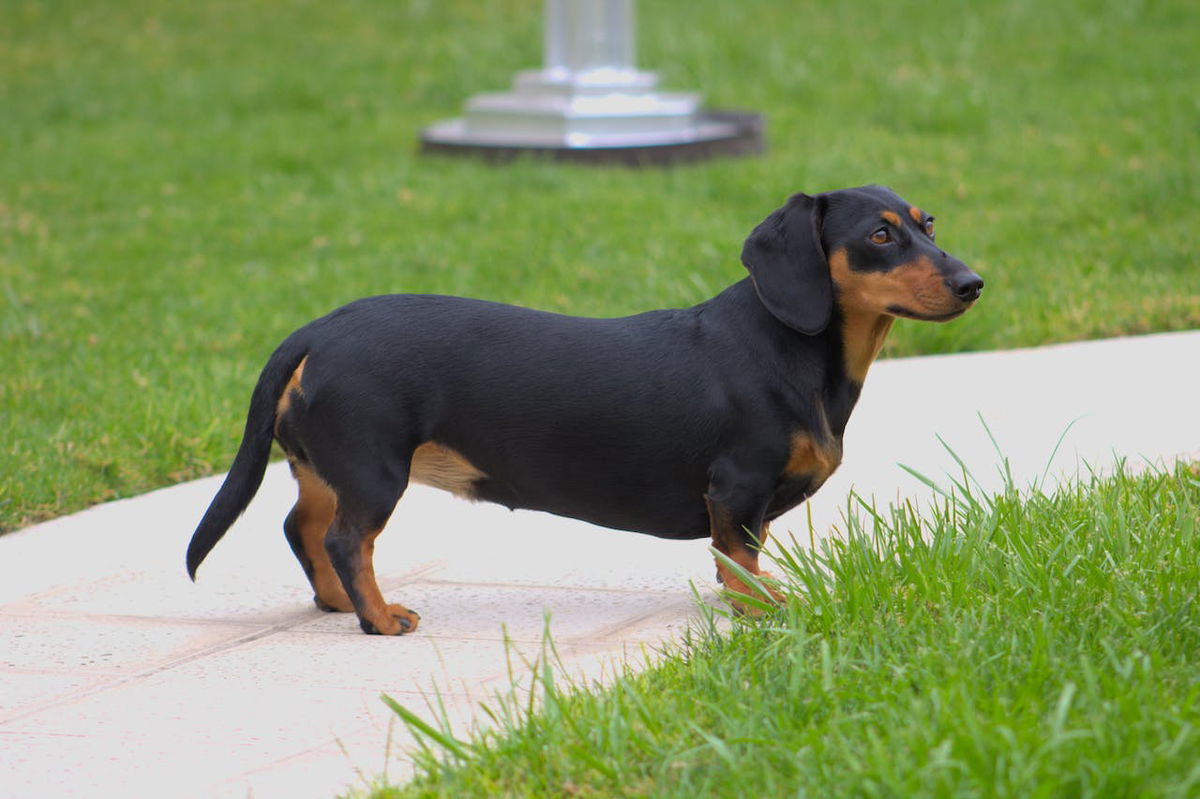
Historically, the standard Dachshunds were bred for their tenacity in tracking stubborn animals like badgers and wild boars.
Standard-sized Dachshunds can be a superb choice for singles, the elderly, and larger families with adolescent kids.
2. Miniature Dachshunds
Also called the Dwarf Dachshunds, these little hound dogs are the minuscule version of the Standard Dachshunds and are slightly larger than the Rabbit Dachshunds.
They were initially bred to retrieve small game for their masters in the hunting field across the western European countries.
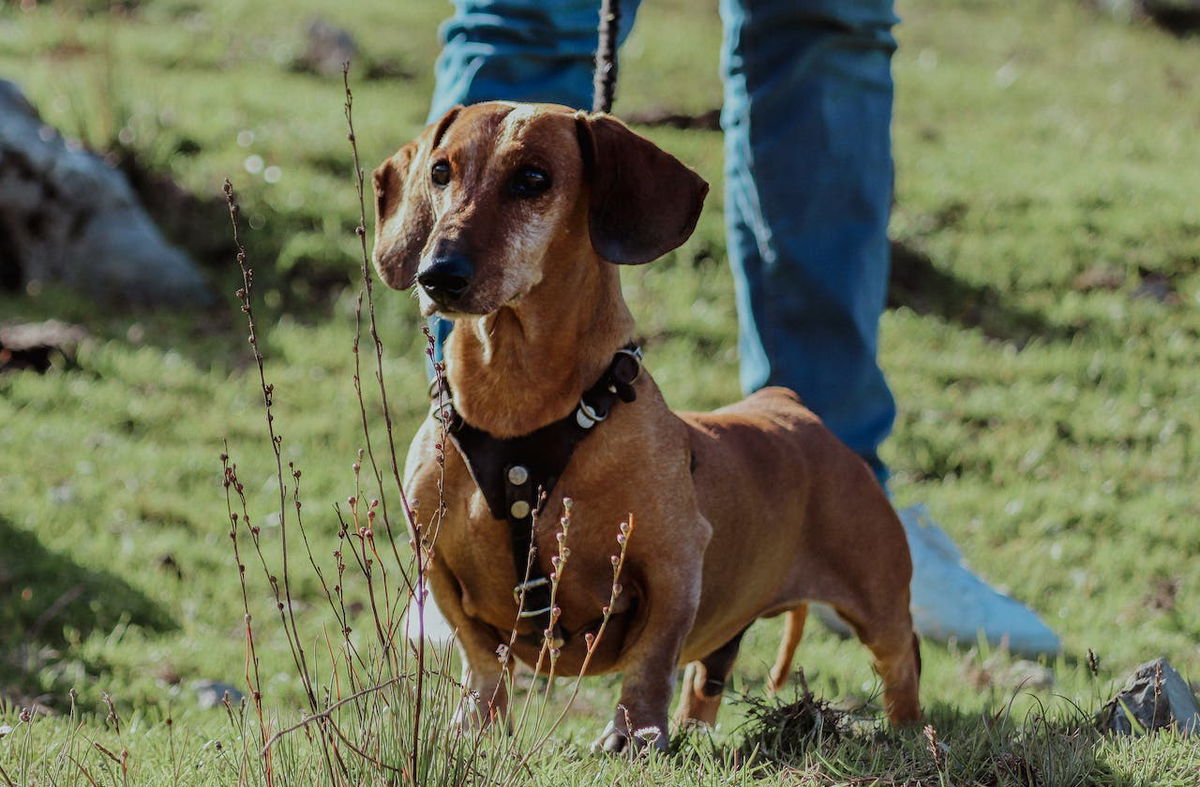
Most Dwarf Dachshunds will not grow any larger than 11 pounds and they have an average shoulder height of between 4 to 7 inches.
Mini Dachshunds are highly adaptable and can make great companions for people living in smaller spaces such as apartments.
3. Rabbit Dachshund
Also called the “Kaninchen Dachshund” in Germany, these little hounds are a pint-sized version of the standard type.
They are the smallest variety of the Dachshund dog breed with a maxed-out weight range of about 7 to 8 pounds when fully matured.
Rabbit Doxies rarely exceed a body length of 11 inches which makes them excel in what they were bred to do.
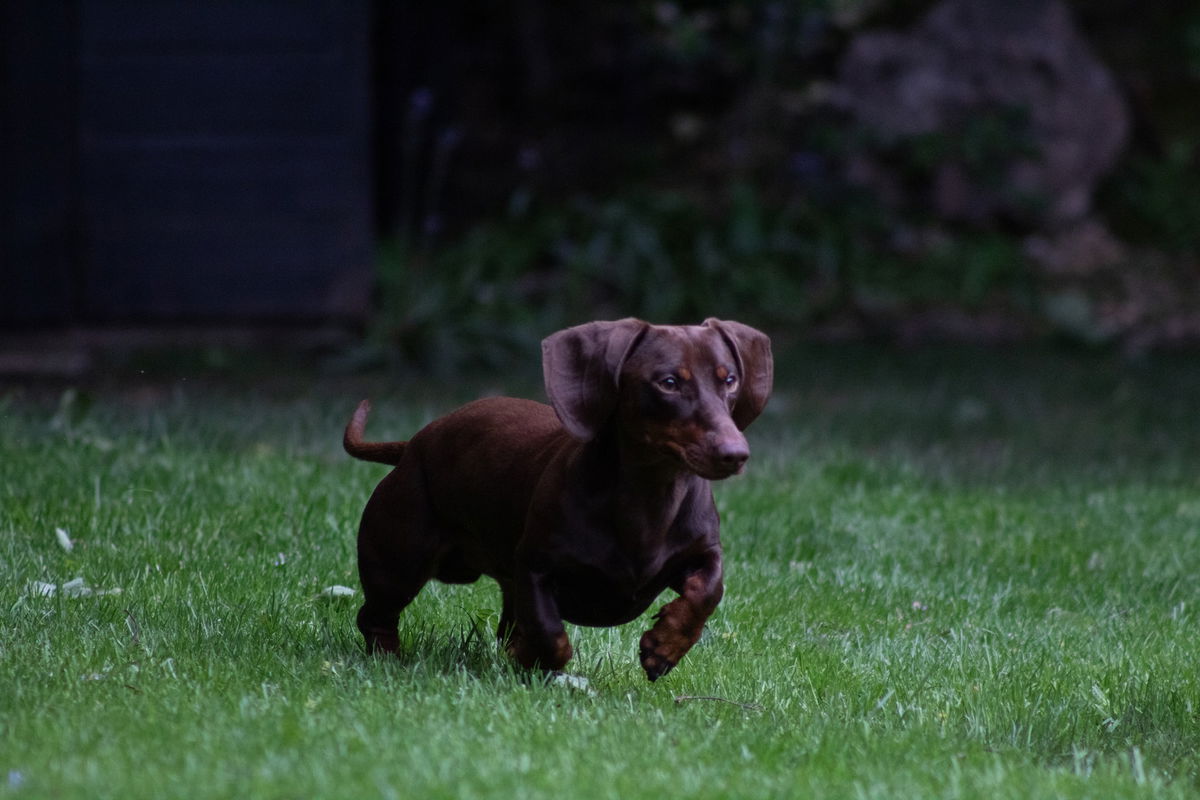
From their name, Rabbit Dachshunds were deployed in hunting fields to track down and flash out rabbits from their burrowing dens.
Kaninchens are super friendly, fearless, energetic, and shrewd. They can make good household pets although their stubbornness may be a turn-off for many potential dog owners.
The Rabbit Dachshunds are not officially recognized by the AKC, but they are rather placed in the same category as the miniature Doxies.
B. Based on Coat Type
1. Smooth-haired Dachshunds
Dachshunds with a silky-smooth coat are the most popular and iconic type compared to other coated peers.
These Doxies have a short, shiny coat that’s easy to maintain and a sleek look to Doxie enthusiasts.
Short-haired dachshunds can make excellent watchdogs since they are ever vigilant of suspicious noise and strangers.

They tend to bark more often than other Dachshunds and this might be a concern if you live in an area where excessive barking can bother your immediate neighbors.
But, with proper and consistent training, you can reduce the barking tendencies of your Doxie. It’s also a good idea to enroll your smooth-coated Doxie in an obedience class.
2. Long-Haired Dachshund
Long-haired dachshunds sport a lavish feather-like coat that sets them apart from their other cousins. Their hair is double-layered and softer to the hand.
It’s hypothesized that the silky coat was developed to protect these ferocious hunters from harsh weather in high-ground hunting fields.
These Dachshunds have longer hair in some parts of the body than others. You’re likely to see extended fur around the neck, ears, belly, and tail underside.
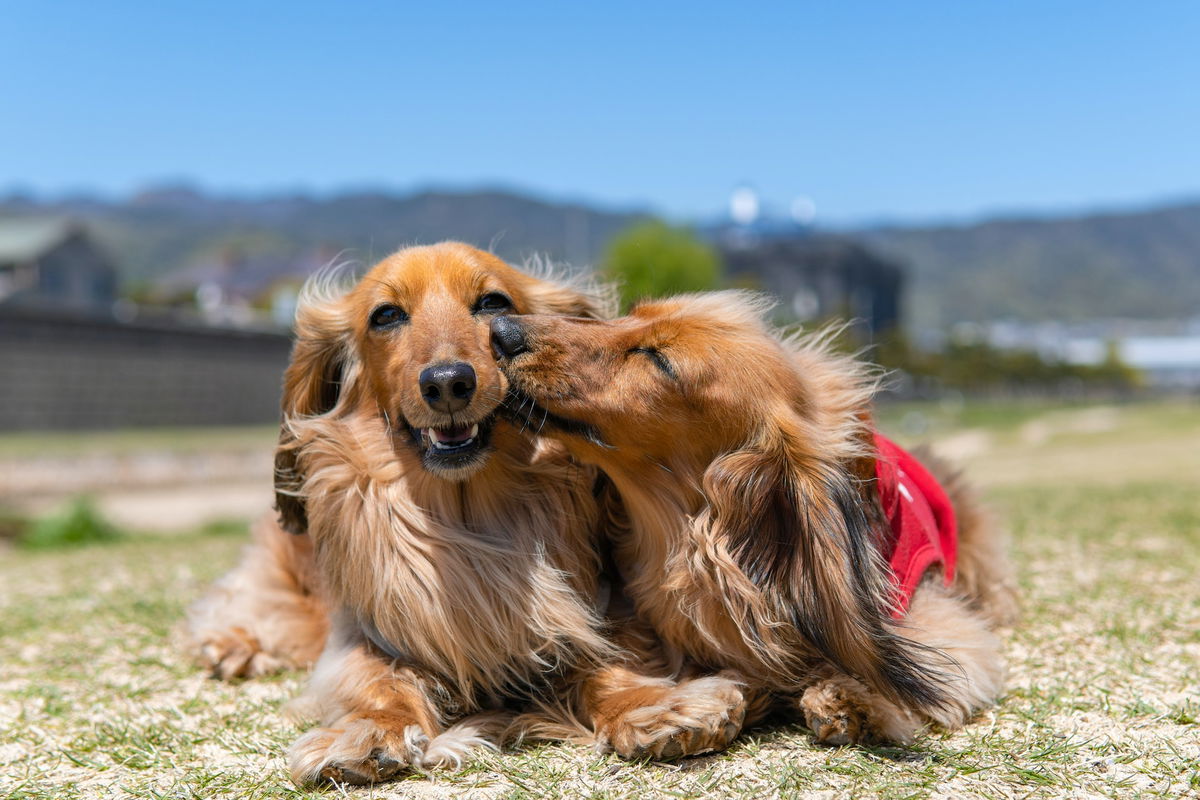
With such extensive, flowing fur, these Doxies need regular brushing to prevent matting and to make them glow.
Long-haired Doxies have the habit of barking at strangers like their smooth-haired peers. They can make excellent household pets in families with older kids.
3. Wire-Haired Dachshund
Dachshunds with wire-haired coats have medium-length fur that feels coarse and brittle to the touch due to their ancestral linkage with terrier dogs.
These mini hounds also have cute facial hair that sets them apart from their closest peers. They are widely considered the most energetic Dachshund dog.
These courageous and tenacious Dachshunds have a rugged, outdoorsy look that makes them a favorite doggo for those who need a more adventurous canine companion.
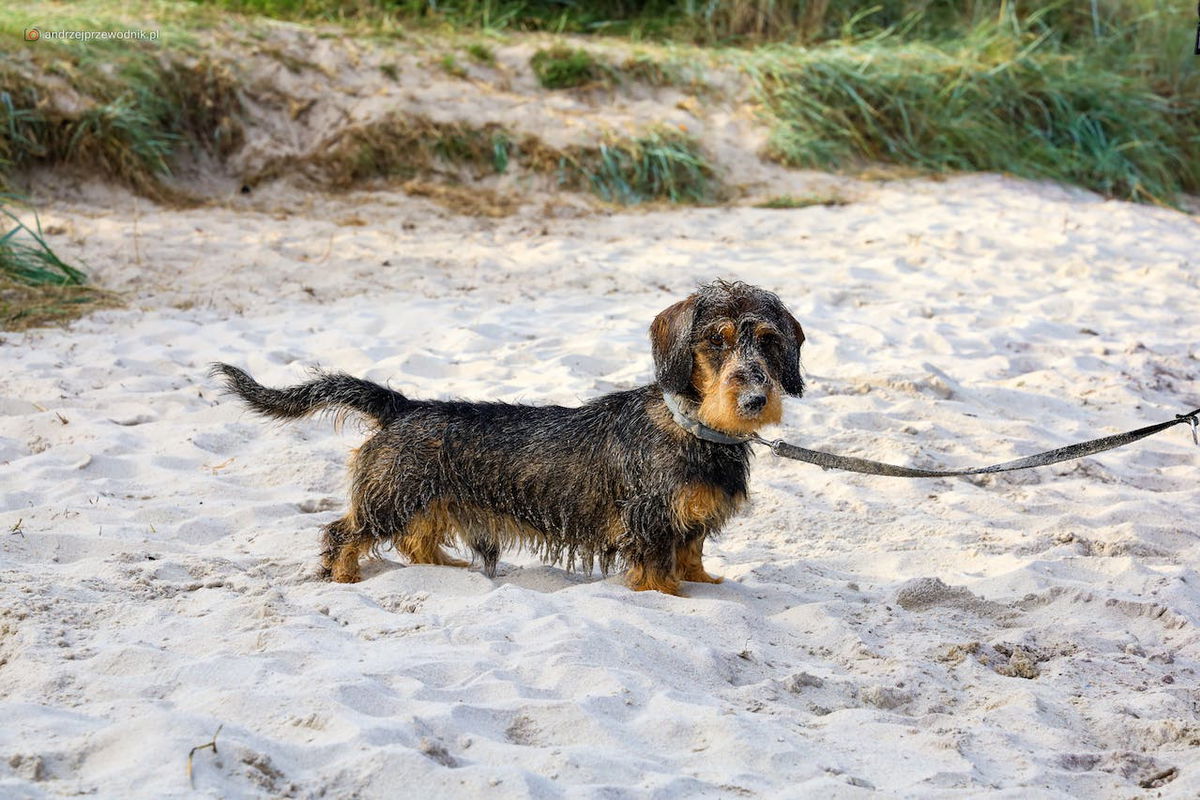
Wire-haired Doxies are the youngest siblings of the Dachshund family and were not officially recognized until the late 1890s.
Even though all Dachshund types are susceptible to certain medical problems, the wire-haired ones are more prone to brittle bone disease which weakens the bones and teeth.
Dachshund Physical Characteristics
Size, weight, and Coat features
| Physical Characteristics | Standard Dachshunds | Miniature Dachshunds | Rabbit Dachshunds (Kaninchen) |
| Weight Range (Males) | 20-32 pounds | 9-11 pounds | Less than 8 pounds |
| Weight Range (Females) | 16-24 pounds | 8-10 pounds | 7-7.5 pounds |
| Height at Shoulders | 8-9 inches | 5-6 inches | 5-6 inches |
| Common Coat Colors | Red, Black, Brindle, Tan, Chocolate, sable, Brown, Grey, Cream, Dapple | Red, Black, Sable, Grey, Brindle, Tan, Chocolate, Cream, Dapple | Red, Black and Tan, Chocolate, Cream, Dapple |
| Common Coat Textures | Soft-Haired (short and sleek), Long-Haired (soft and flowing), Wire-Haired (rough textured and bristly) | Long-Haired (soft and flowing), Smooth-Haired (short and sleek), Wire-Haired (rough and bristly) | Soft-Haired (short and sleek), Long-Haired (soft and flowing), Wire-Haired (rough and bristly) |
Dachshund Temperament and Personality
Dachshunds are loved for their lively personality and collected temperament making them a great addition for families with kids.
Keep in mind that these little hound dogs were bred to persevere in harsh hunting fields, which is another way of saying they can be stubborn sometimes.
Many Dachshund owners have described their sausage-like dogs as having a reputation for entertainment and the need to cuddle when they feel exhausted.
As we noted in our previous section, the personality of an individual Dachshund can vary depending on their coat type.
For example, wire-haired Doxies can cause a little trouble from time to time because of their terrier influence.
Long-haired Doxies are known for their quietness and calm demeanor while their smooth-coated peers have a personality that lies between them.
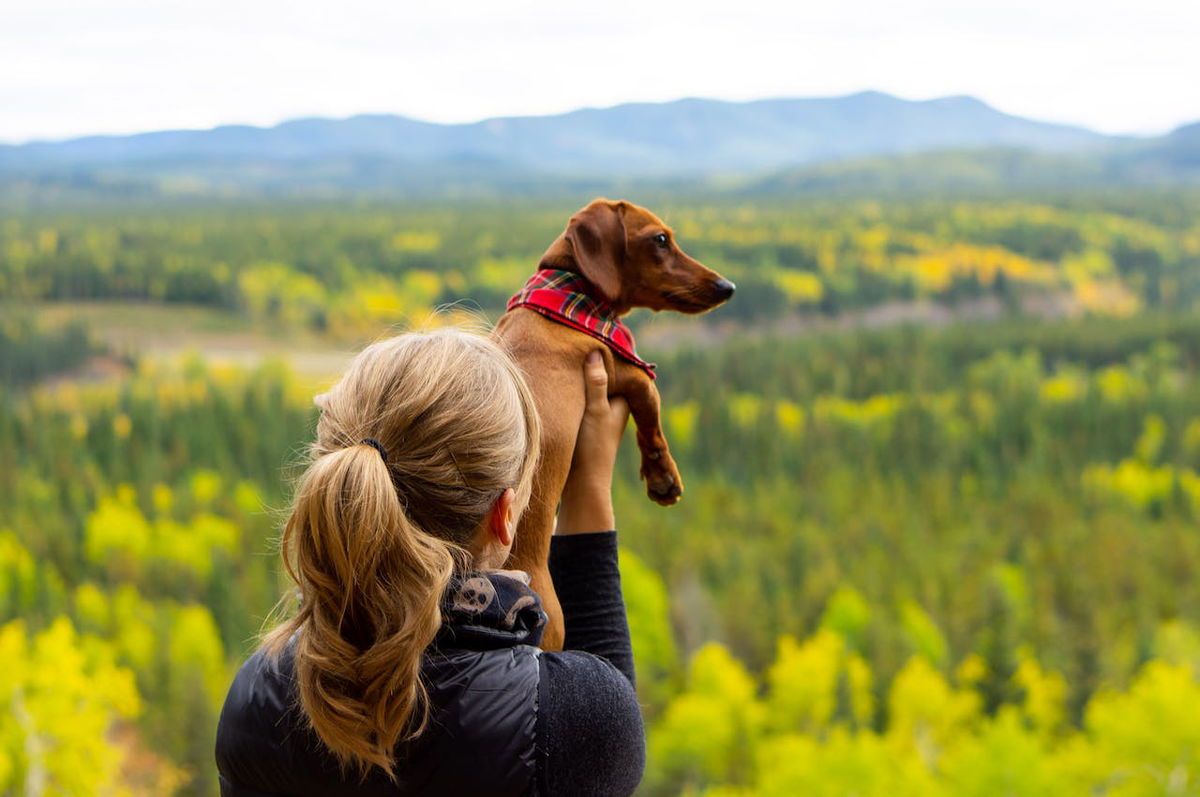
Dachshunds can share a home with other pets, provided you introduce them beforehand and create an environment for each animal to feel safe.
Doxies have an inherent desire to chase small animals, so it should not come as a surprise if they track down your small pets such as rabbits and rodents.
If you’re looking for an ever-alert canine companion who will be there by your side and occasionally get goofy during outdoor activities, then Dachshunds can be an excellent choice for first-time pet owners.
Dachshund Intelligence
Dachshunds dog breeds are considered to have a ‘fair intelligence’ according to Dr. Stanley Corren’s study on ‘The Intelligence of Dogs‘.
These wiener dogs came out position 92 out of the 138 breeds tested and evaluated by over 200 judges during the trial period.
Dr. Corren’s research showed that Dachshunds can take up new commands after an average of 25 to 40 repetitions, with a 50% chance to obey the first command.
The average ratings from Dr. Correns reveal a pretty good canine IQ no wonder Dachshunds are known to create their own rules during playtime and socialization.
It’s because of their impressive mental knack that these hound dogs were able to master the art of scent-trailing and fetching out badgers from their small dens.
Dachshund Health and Lifespan
Average Lifespan
The average lifespan of a Dachshund is about 12 – 16 years, although some individuals can exceed this range if they receive top-notch care.
A Dachshund named Rocky from Shingle Springs, California holds the record as the oldest known Dachshund after living for 25 years.
Several factors can influence how long any dog breed may live including overall healthcare, diet, and general lifestyle.
Breed-related diseases and genetic disorders are some of the largest factors that can determine your Dachshund’s quality of life.
Common health issues and genetic disorders in Dachshunds
Dachshunds are generally healthy dogs but they are prone to certain medical conditions due to their unique body build.
It is estimated that close to 25% of all Dachshunds will suffer back problems in their lifetime due to their elongated body build if they are not properly fed or exercised.
The wiener-shaped body design supported by short limbs puts Doxies at a greater risk of suffering intervertebral disc diseases which makes puts a heavy toll on their vertebral column.
Dachshunds love to eat and they can be prone to obesity if they consume too much carbohydrates without physical and mental activities.
Some wire-haired Dachshunds have also been reported to have genetic concerns about hereditary alopecia (hair loss).
Preventive measures for good health
When purchasing a Dachshund puppy, we suggest you stick to reputable breeders who adhere to the set guidelines for reproducing healthy puppies.
The breeder should provide you with a health clearance certificate that shows your desired puppy is free from common conditions including bone and eye problems.
If you’re adopting a Doxie from a rescue center, feel free to ask the attendant about the health history of your desired pup if they are in a position to provide any.
It also helps in a great way to have your Dachshund examined by a qualified veterinarian regularly.
It’s during these vet visits that chronic conditions can be spotted early and treated successfully.
Make sure your Dachshund is updated with all the core vaccines and recommended booster shots to keep their immune system strong against communicable diseases.
In addition to providing a balanced diet, make sure your Doxie gets enough exercise to keep them healthy and in good shape.
Dachshund and Allergies
All Dachshunds shed average amounts of fur, but the smooth-coated type experiences relatively smaller amounts of hair fall than the rest.
This is great news for individuals who may be allergic to pet hair and pet dander since they won’t have to deal with excessive hair fall.
To combat negative reactions from pet allergens, we recommend grooming your Dachshund and keeping your home humidified.
Dachshund Grooming Needs
The grooming needs of a Dachshund will depend on their coat type. Smooth-haired ones will need less coat care compared to long-haired and wired-fur Doxies, who need special care to prevent tangling.
Short-coated Dachshund needs occasional bathing with hypoallergenic shampoo and wiping down to keep them looking great and shiny.
If you have a Long-Haired Dachshunds you may need to glide through their coat daily to prevent matting and tangling.
In addition to daily brushing, Wire-Haired Dachshunds will also require occasional trimming to maintain their jagged and brittle appearance.
Dachshund’s floppy ears can keep dirt and bacteria so it is always important to monitor it and clean it with a vet-approved ear cleanser.
If your Doxie’s ear is full of wax or it’s excreting reddish yellow discharge, this could be a sign of bacterial infections.
Make sure to dry your dog’s ears after swimming or bathing since a moist environment may harbor the growth of pathogens.
Remember to regularly trim your dog’s nails to keep their paws in great condition. These dogs love to burrow and nestle, so you wouldn’t want them to have overgrown nails that can easily break.
Brushing your dog’s teeth with canine toothpaste and a soft toothbrush a couple of times a week is enough to keep them in good oral health.
Dachshund Exercise Needs and Activity Levels
Daily Activity needs
Dachshunds need moderate physical activities and mental stimulation to keep them healthy and in good shape.
Failure to provide your Doxie with enough exercise may cause them to develop destructive habits and become overweight.
Most adult Dachshunds can thrive with a daily exercise allowance of between 45 minutes and 1 hour depending on the individual dog.
Suitable activities and games for Dachshunds
Daily evening strolls around your neighborhood and occasional hikes on the hills are enough to keep most Doxies in good condition.
You can also incorporate some mental exercises like playing fetch and puzzle games to keep your pup’s brain active and healthy.
Since Dachshunds are natural hunters, it’s always a good idea to provide them with cozy digging spots to exercise their inherent traits and to keep them sharp.
Importance of mental stimulation
- Teaching your Dachshund new tricks and exercising their brains can help improve their decision-making skills.
- Mentally stimulating activities can keep dogs engaged for long hours, helping to drive away boredom and reduce their chances of stress.
- Senior Dachshunds can benefit from brain-taking activities since they slow down the rate of mental decline, commonly known as canine dementia.
- Engaging with your pup in interactive games can help strengthen the relationship to create an even better bond with your beloved furry friend.
Dachshund Training and Socialization
The eagerness to learn and curious attitude of Dachshunds puts them in a good position for enrollment into obedience classes.
We suggest that you train your dog from an early stage to ensure they grow into becoming responsible adults.
Most Dachshunds have the inherent attitude of being stubborn, defensive, and cautious which is manifested in their tendency to bark.
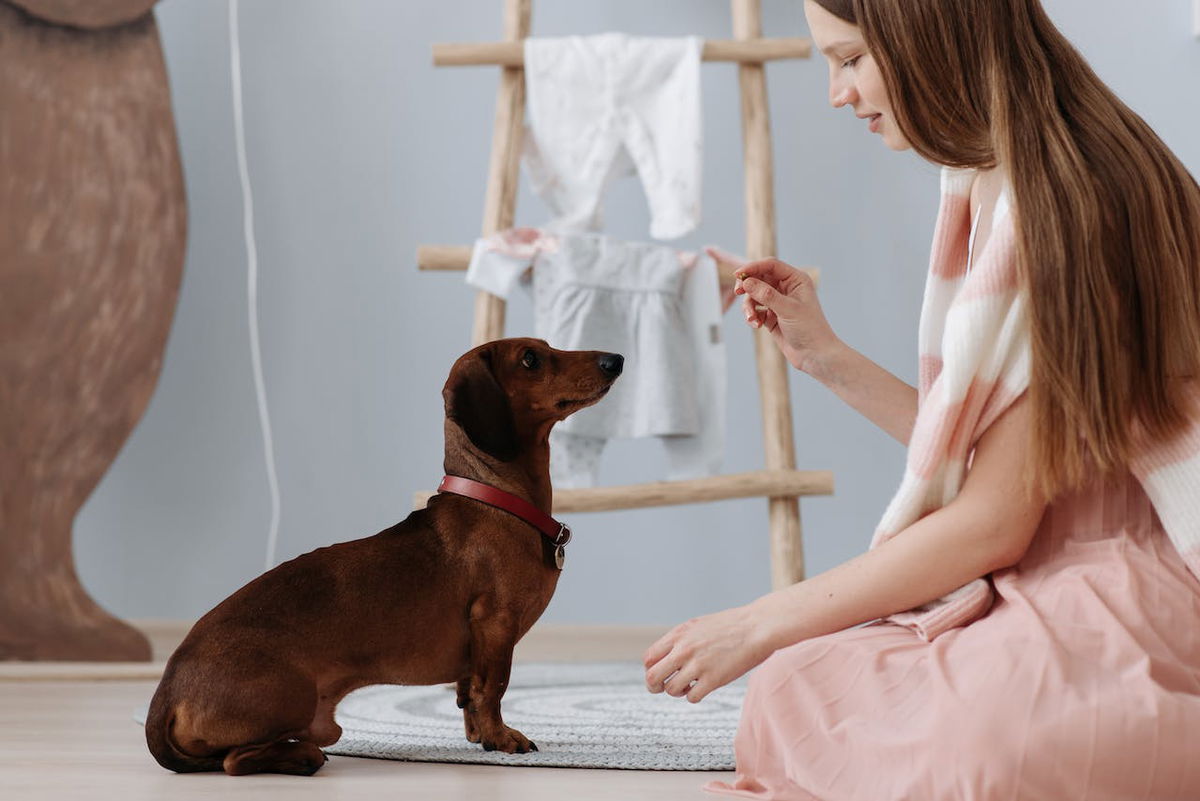
Proper and consistent training can help reduce these potential problems into desirable qualities for a household pet.
Socialization by exposure to different people, pets, and environments can also help your beloved Dachshund to adjust to your family setup.
As with most other hounds, you need patience and consistency when teaching your Dachshund new tricks.
These dogs can also be irritable when bored, so make sure to keep the training period short, or else your Doxie will find something fun to do.
Dachshund Living Conditions
Dachshunds are highly adaptable dog breeds who can find pleasure in living in various
conditions.
People residing in small spaces such as apartments can have Doxies so long as they provide them enough space to exercise and dig.
If you’re in a larger house with a backyard, these natural hunters can enjoy the outdoor space more.
But you need to ensure the area is fully fenced, since their hunting instincts may lead them to chase small animals.
Remember Dachshunds have long bodies with short legs, so be sure to invest in pet stairs or ramps to protect them from jumping onto elevated surfaces.
These low-riding canines will need cozy dog bed designed to keep them warm and provide nestling spots for their burrowing instincts.
Dachshund Diet and Nutrition Needs
Dachshunds should get a constant supply of high-quality canine diets to keep them healthy and happy.
The portion will depend on your dog’s age, activity level, health condition, and other factors.
These sausage canines love to eat, so we strongly recommend limiting their carbohydrate intake and reducing their snacks in between meals.
Monitor your dog’s eating habits and speak to your vet nutritionist if you notice any tendency of them to become overweight or refuse certain types of foods.
A qualified vet nutritionist can help you work out the perfect feeding formula and schedule to keep your Doxie at a healthy weight.
Dachshund Pregnancy and Litter Size
The pregnancy period for most Dachshunds should typically last about 63 days and their litter size can vary with individual dogs.
Most expectant Dachshunds can have anywhere between 1 to 6 puppies with the average litter size being 4 puppies.
However, some individual dogs can exceed this range. An example is Rayma’s 3-year-old wire-haired Dachshund named Winnie, who gave birth to a whopping 11 healthy puppies in the UK.
Conclusion
Dachshunds dog breeds are highly favored for their unique appearance and curious personalities which makes them one of the best dog breeds.
Keep in mind that these low-riding canines have natural hunting instincts, which makes them a little stubborn and naughty when bored.
Consistent training and socialization can help prevent your lovely Doxie from developing negative habits and grow into a responsible adult.
Laura is the founder of Furs'n'Paws. She is a also a pet writer and expert with more than 20 years of experience of working with dogs and cats. She developed a very strong love for animals at a young age. Her passion led her to establish a thriving pet sitting and dog walking business in Dubai. As an expert in pet training, behavior, and nutrition, Laura is committed to helping pet owners and pet lovers by offering high-quality information on a wide range of topics.


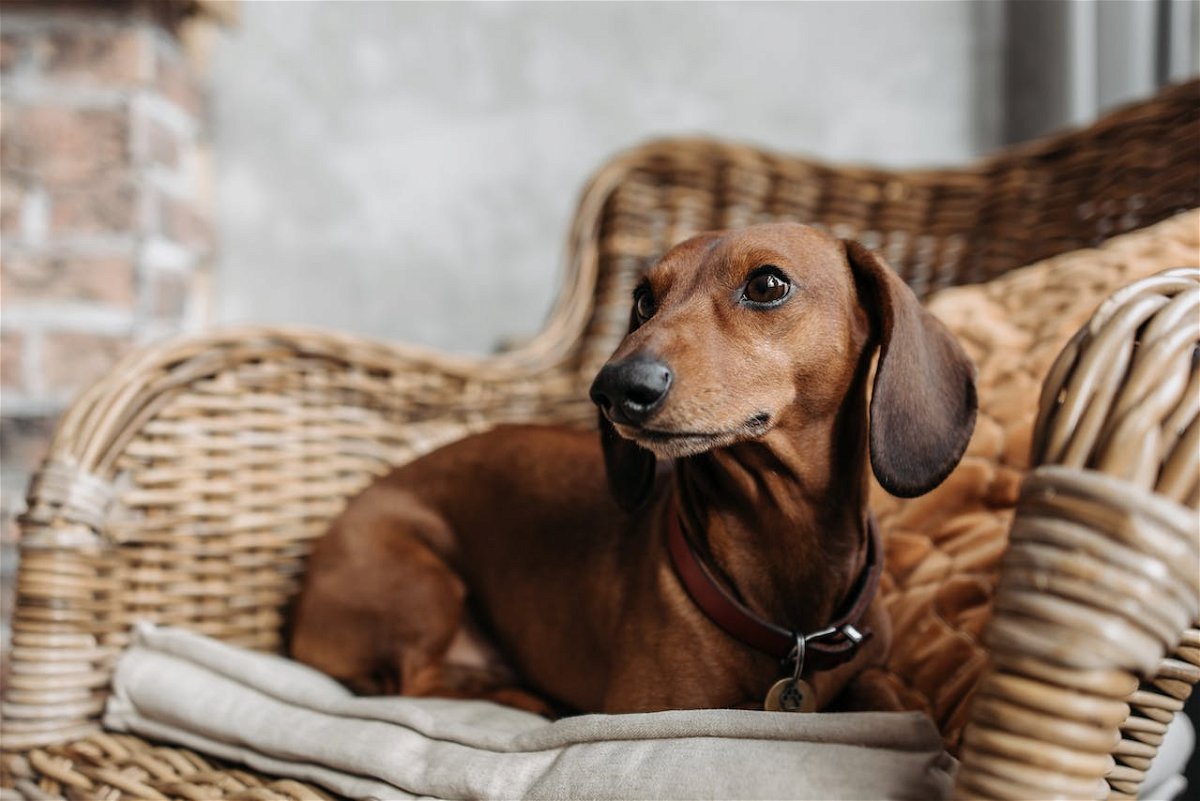
No responses yet